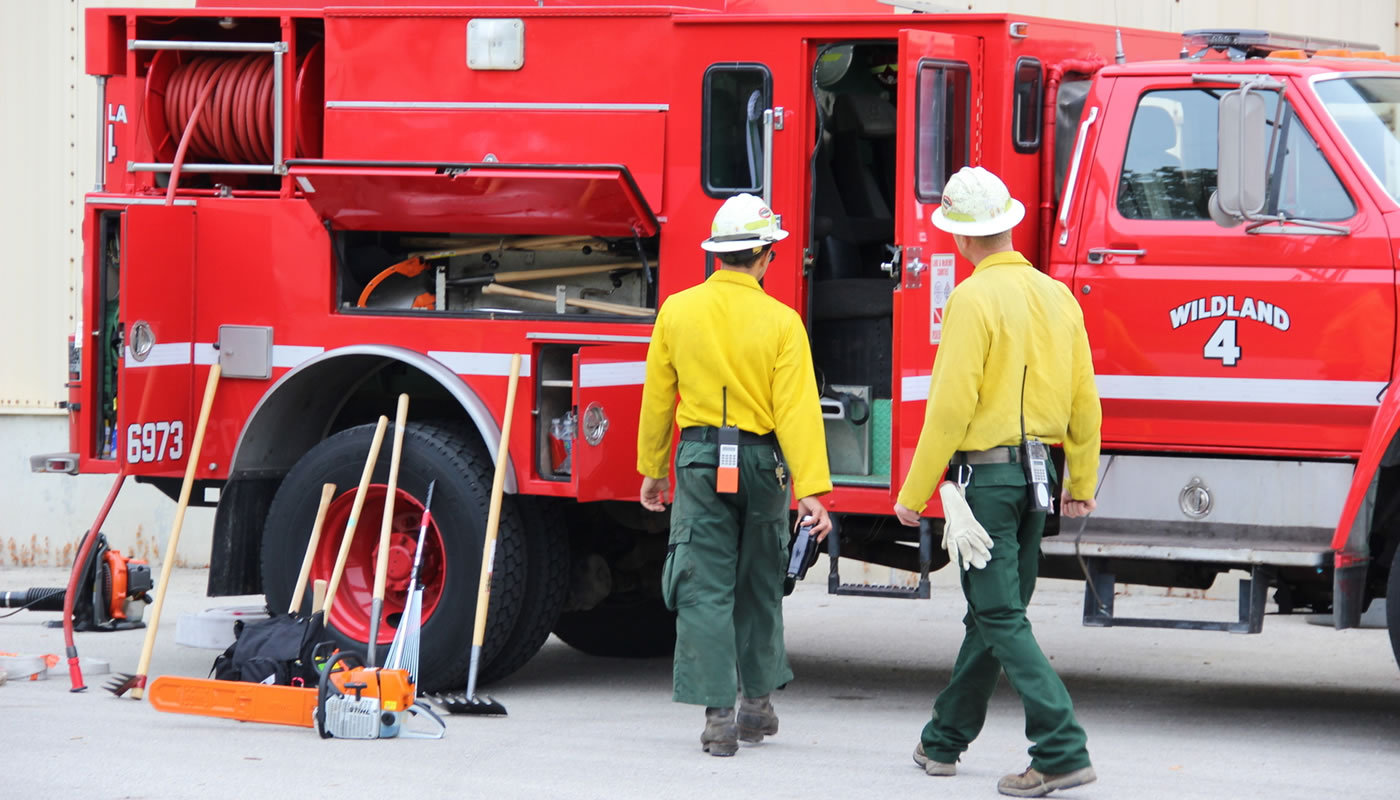Forest Preserves staff train with other agencies and local fire departments.
We hear a lot about major wildfires in the western United States, but wildfires are not something most people think of as a natural hazard here in northeastern Illinois. Yet while they are vastly smaller and less complex than those out west, wildfires can and do occur here. It’s important that fire response teams across the county, and across multiple disciplines, are prepared.
This past September, the Forest Preserves of Cook County, Midewin National Tallgrass Prairie and the Lake/McHenry County Wildland Fire Crew conducted wildfire suppression training and field exercises at the Forest Preserves’ Salt Creek Resource Management facility in Western Springs. Fire crews built fire lines, worked with wildfire fire engines, discussed prescribed burn and wildfire suppression techniques and trained on structure protection.
Working with local fire agencies and other cooperators who may be responding to fires on forest preserve properties helps us both share our expertise and build relationships. Wildfires and structure fires require very different tactics to safely control, and this training allows all those participating to better understand the methods and hazards unique to wildfires.
A large wildfire at Deer Grove in March 2012 illustrated how a fire department can work well with a land management agency to contain such a fire. Forest Preserve staff worked with Lake Zurich and Palatine Fire Departments to control the blaze, spending multiple hours in the cold wetland suppressing the fire.
Not all fire is bad—in fact, our fire-adapted ecosystems heavily rely upon it. The Forest Preserves, like other land management agencies, uses prescribed burns as a key land management tool. Done under the careful watch of trained burn crews, prescribed burns help maintain a healthy ecosystem. They also help prevent and minimize wildfires by eliminating the accumulation of dry fuel (sticks, leaves, dead grass) on the ground. (Burn season is usually November through early December in fall, and March through early April in spring. Look for our crews in the field next month.)
While we occasionally see fires started by lightning, the bulk of our local wildfires are caused by people, whether through carelessness or arson. (The 2012 Deer Grove fire was started by careless disposal of smoking materials.) Visitors should dispose of smoking materials and hot coals properly when they’re in the forest preserves.
Through the teamwork of the responding fire departments and Forest Preserve staff, the Deer Grove fire was safely suppressed, a powerful illustration of the benefits of collaboration. We look forward to training and working with our partners in the future.

